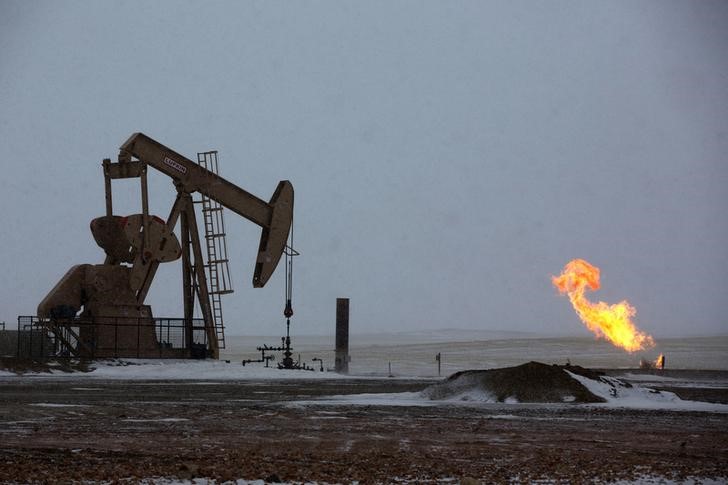Investing.com - Oil prices fell sharply in North American trade on Monday, adding to overnight losses as investors shifted their focus back to the global production outlook.
Oil futures have been well-supported in recent weeks due to a combination of Nigerian, Libyan and Venezuelan supply outages, as well as reduced production of Canadian crude as a result of fires in Alberta's oil sands region.
However, as some of the supply disruptions are subsiding, traders are putting their focus back on the growth of global oil supply.
Exports from the eastern port of Marsa al-Hariga in Libya resumed over the weekend with Libya’s state-run National Oil Company saying a 660,000 barrel cargo had sailed from the port that had been a subject of dispute between rival groups vying for control of the country.
Elsewhere, the threat from forest fires in northern Alberta receded further over the weekend with the blazes moving away from oil-sands production facilities and a nearby evacuated town as cooler, wetter weather aided firefighting efforts.
Media reports saying that Iran plans to increase oil export capacity to 2.2 million barrels by the summer and has no plans to freeze its level of oil production at the upcoming OPEC meeting further weighed.
On the ICE Futures Exchange in London, Brent oil for July delivery slumped to a session low of $47.58 a barrel before recovering slightly to trade at $47.67 by 13:45GMT, or 9:45AM ET, down $1.05, or 2.16%.
Brent prices jumped to a six-month peak of $49.88 last week. Brent futures are up by roughly 85% since briefly dropping below $30 a barrel in mid-February, despite the collapse of talks at a Doha summit in April aimed at achieving a production freeze among OPEC and Non-OPEC producers. OPEC meets on June 2 in Vienna and may discuss the freeze initiative again.
Elsewhere, crude oil for July delivery on the New York Mercantile Exchange shed 92 cents, or 1.9%, to trade at $47.52 a barrel after falling to an intraday low of $47.40.
Nymex prices rallied to $49.56 last week, a level not seen since October. U.S. oil prices are up nearly 80% since falling to 13-year lows at $26.05 on February 11 as declining U.S. shale output boosted sentiment.
However, with prices now at levels that make drilling economical for some firms, the oil rig count might start rising soon and the decline in U.S. production may slow.
Oilfield services provider Baker Hughes said late Friday the number of rigs drilling for oil in the U.S. was unchanged at 318 in the latest reporting week, after eight straight weeks of declines.
Meanwhile, Brent's premium to the WTI crude contract stood at 15 cents a barrel, compared to a gap of 31 cents by close of trade on Friday.
